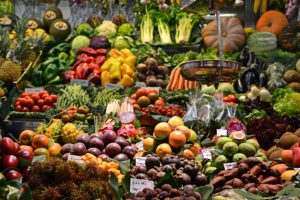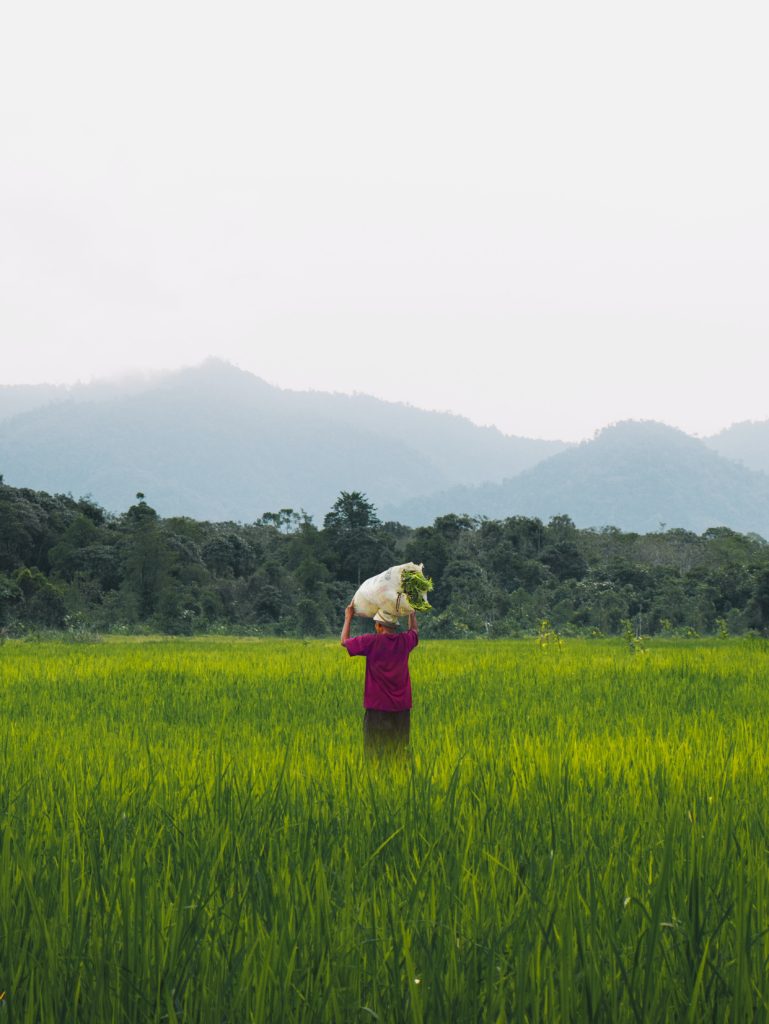How does procurement impact climate?
Procurement can make a real difference when it comes to cutting carbon emissions. Greenhouse gas (GHG) emissions in an organisation’s supply chain are, on average, 11.4 times higher than its operational emissions. (1) Driving emission reductions related to procurement is therefore key to leveraging change.
Why is food important?
The production of food is estimated to produce between 21 and 37% of overall anthropogenic emissions. (2) These emissions stem from land-use changes including deforestation and soil degradation, as well as crop and livestock activities at farm level: Processing, packaging, transport, storage, food preparation and waste. (3)
In a business-as-usual scenario, emissions from food production are likely to increase by about 30-40% by 2050 due to population growth, income growth and dietary changes. (4)
As well as food supply coming under pressure from an increase in demand, climate change (through the effects of rising temperatures, droughts and extreme rainfall) is affecting the quantity and nutritional quality of crops, making the food system a strategic sector to consider. (5)
Why is this a key issue for the aid sector?
A number of aid organisations distribute food and where they do, it often makes up a large share of the procurement-related footprint. For aid organisations notably rice constitutes an important staple food with a high carbon impact. Whilst rice provides one-fifth of the calories consumed worldwide, its production is responsible for 1.5% of total greenhouse gas emissions and 10% of agricultural emissions. (6)

How can we act?
To reduce the carbon impact of food several options are possible. Prioritising low-carbon alternatives can play a major role in reducing an organisation’s carbon emissions. Sourcing locally-produced food items, preventing deforestation risks and addressing food waste are key levers. A very impactful way aid organisations can contribute to reducing emissions in the food sector is to set up dedicated projects with suppliers and producers with the goal of improving agricultural practices to reduce emissions.
Points to consider
Switching to low(er)-carbon food options is theoretically easy to implement. However, the cultural and traditional aspects of people in need are constraints that should not be overlooked. Furthermore, investing in specific projects to improve agricultural practices requires resources and financial investment. The feasibility of sourcing locally-produced food will depend on the (seasonal) availability of food items. Finally, for certain commodities certifications are in place to help make choices with a reduced deforestation risk.
Reducing the carbon impact of food items for an aid organisation requires the involvement of different departments and specialists, such as nutritionists and local experts. Their input will ensure that a potential change in food items does not impact nutritional values negatively and is adapted to nutritional and cultural habits of beneficiaries.
Key solutions
-
#1 Switch to low-carbon food options
Choose food items with a lower carbon and environmental impact, such as pulses, to avoid emissions from the production of high-emitting items.
-
#2 Invest in regenerative agriculture or low-carbon production methods
Work together with suppliers and producers and invest in projects to decrease carbon emissions from food production in your supply chain.
-
#3 Reduce food waste
Prevent food waste by improving demand planning, inventory management and by redistributing food close to its expiry date.
-
#4 Source locally-produced food
Invest in local livelihoods and reduce emissions related to transport by sourcing locally-produced food items.
-
#5 Prevent deforestation risks in the food supply chain
Put in place measures for high-risk food items such as palm oil, soy, beef, sugar.
-
#6 Rice
Diversifying grain purchases, purchasing rice produced with less environmental impact, and working with suppliers to promote better agricultural practices.
-
#6 Plant-based proteins
Adopting a sustainable and balanced diet, by reducing animal-based proteins and shifting towards plant-based proteins, reduces greenhouse gas emissions and has important health benefits.
5 key items to consider due to their high footprint or deforestation risk
5 key items to consider due to their high footprint or deforestation risk
- Meat and fish
- Rice
- Palm oil
- Soy (including for animal feed)
- Sugar
Key tools
-
Procurement policy
A procurement policy with specific criteria for the sourcing of food items is a key tool to put in place. Depending on the type of food item and the availability of alternatives, the criteria may have to be used as guidelines – at least as a first step.
-
Measuring food waste
In order to be able to reduce food waste, organisations should have at least an estimation of how much food waste is generated. A system to measure food waste should be put in place. This also allows comparisons over different years and to monitor the success of the chosen food waste reduction measures.
Tools and best practices
To go further
-
"Food security" in Climate Change and Land: an IPCC special report
Overview of key topics regarding emissions related to food production with a focus on food security
Read report -
Food systems are responsible for a third of global anthropogenic GHG emissions, Nature Food, Vol. 2
Article detailing the global impact of food systems on carbon emissions
Read more -
Ellen MacArthur Foundation, Food workstream
Resources on creating a circular economy for food and implementing regenerative agricultural practices, including case studies
Read more -
Exponential Road Map, Chapters: Food Consumption and Nature-Based Solutions
Overview of key global solutions to half emissions by 50% by 2030, including estimations on the feasibility of solutions
Read more
Download this solution area
-
Food items
Download
Shift to low-carbon food options

Rice

Plant-based proteins

Sources
(1) Carbon Disclosure Project, Engaging the Chain, 2022. Read here.
(2) Mbow et al. 2019, Food Security. In: Climate Change and Land: an IPCC special report on climate change, desertification, land degradation, sustainable land management, food security, and greenhouse gas fluxes in terrestrial ecosystems. Food system emissions are distributed among many different source categories (land use, production, transport, processing, packaging, retail, consumption, end of life), making it challenging to allocate emissions to the food system. Researchers developed a new food emissions database (EDGAR-FOOD) based on the different stages of the food chain. They come to the conclusion that the food system is responsible for 34% of total anthropogenic GHG emissions; Crippa et al., March 2021, Food systems are responsible for a third of global anthropogenic GHG emissions, Nature Food, Vol. 2, p. 198-209. Read here.
(3) Crippa, M., et.al., Food systems are responsible for a third of global anthropogenic GHG emissions, 2021. Read here.
(4) Food Security. In: Climate Change and Land: an IPCC special report on climate change, desertification, land degradation, sustainable land management, food security, and greenhouse gas fluxes in terrestrial ecosystems, 2019. Read here.
(5) Kristie L E, et.al., Nutritional Quality of Crops in a High CO2 World: An Agenda for Research and Technology Development, Environmental Research Letters, 2021. Read here.
(6) Rice grows mostly in flooded fields called paddy fields. The water prevents oxygen from penetrating the soil, creating ideal conditions for methane-emitting bacteria. The longer the flooding lasts, the more these bacteria accumulate. See WRI, More Rice, Less Methane, 2021. Read here.
(7) Mbow et al., Food Security. In: Climate Change and Land: an IPCC special report on climate change, desertification, land degradation, sustainable land management, food security, and greenhouse gas fluxes in terrestrial ecosystems, 2019. Read here.
(8) FAO, COP26: Agricultural expansion drives almost 90 percent of global deforestation, 2021. Read here.
(9) FAO, The State of the World’s Land and Water Resources for Food and Agriculture, 2011. Read here.
(10) WRI, What’s Food Loss and Waste Got to Do with Climate Change? A Lot, Actually, 2015. Read here.
(11) Hannah Ritchie and Max Roser, Water Use and Stress, 2017. Read here.
Cover photo © Pat Whelen/Unsplash.
Plant-based proteins

Rice

Shift to low-carbon food options

